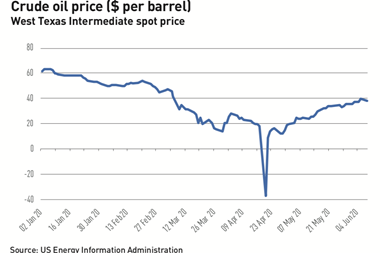Only one in five, or 19%, of the world’s sovereign wealth funds (SWFs) have formal environmental, social and governance (ESG) policies in place, according to a new report by alternatives data provider Preqin and law firm Baker McKenzie.
In their new “Sovereign Wealth Funds in Motion” report, the firms also said the role of SWFs is changing due to the pandemic, with the funds becoming tools of reconstruction, with many investing domestically, for example in big infrastructure projects.
While only 19% of SWFs had formal ESG policies, Preqin said the funds that did were generally the larger ones. In terms of assets under management (AUM), $4.24trn (54%) of the total $7.84trn of SWF AUM at the end of 2020 was managed by funds that did have stated policies, it said.
Overall, the report found there had been a growing momentum among SWFs “to a more sustainable investment future”, Preqin said.
This has been driven by internal initiatives as well as stakeholder pressure from within the funds, and a variety of recent national and international regulatory developments, it said.
David Lowery, head of research insights at Preqin, said: “With most economies working their way through the post-COVID-19 recovery phase, ESG is the means to focus on returns while delivering positive outcomes.”
While many sovereign funds were perhaps late ESG adopters, he said, they were keen to drive future prosperity and were catching up fast.
Preqin said SWFs were becoming more prominent in the global financial system, with collective AUM having grown at a rate of 8% per annum since the end of 2011.
At the end of 2020, SWFs made up roughly 7% of global assets under management (AUM) of $111.2trn, according to the report.
Alternatives allocations up
Preqin said alternative investment funds were one way SWFs could play a part in the reconstruction and recovery efforts, and that SWF investments in private equity, real estate, infrastructure, private debt and hedge funds had grown a lot over the past decade.
Cumulative SWF allocations to such assets was over $700bn at the end of 2020, according to the report.
Private equity was the most popular asset class out of these alternatives for SWFs, Preqin said, with the sovereign funds having a median allocation of 9.3% here, followed by real estate at 6.7%.
Combined median SWF target allocations to private equity, real estate, and infrastructure had grown to 30% in 2020, from just 18% back in 2011, it said.










